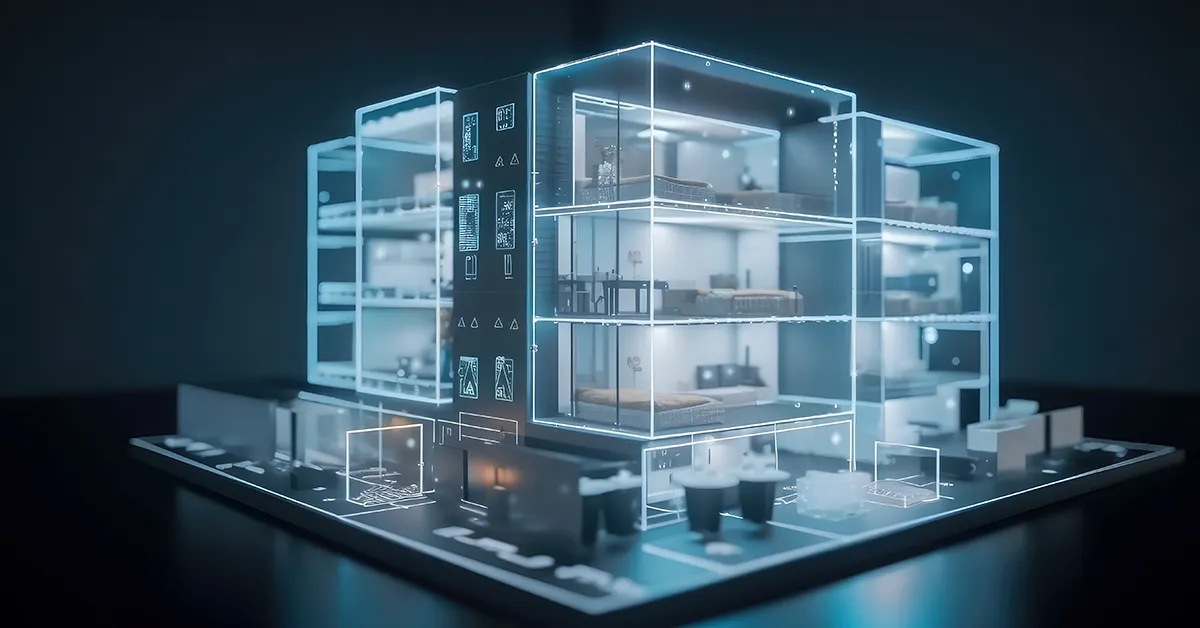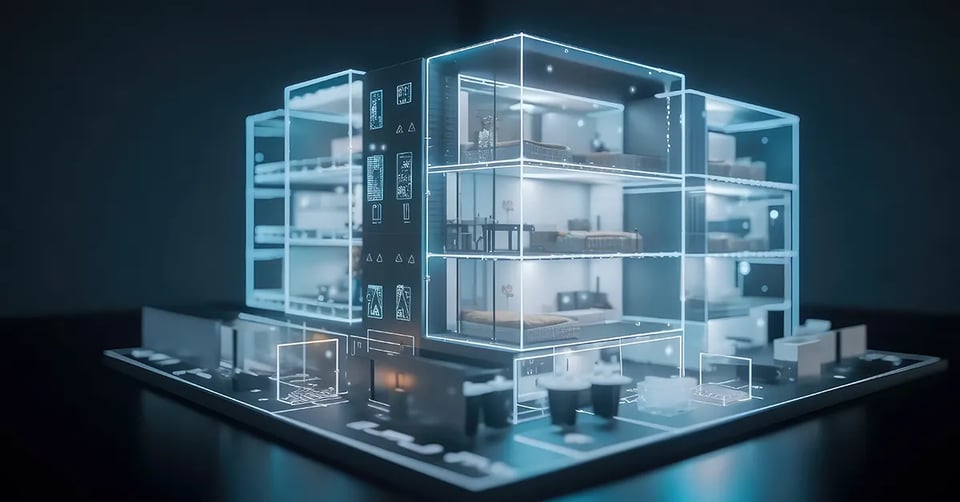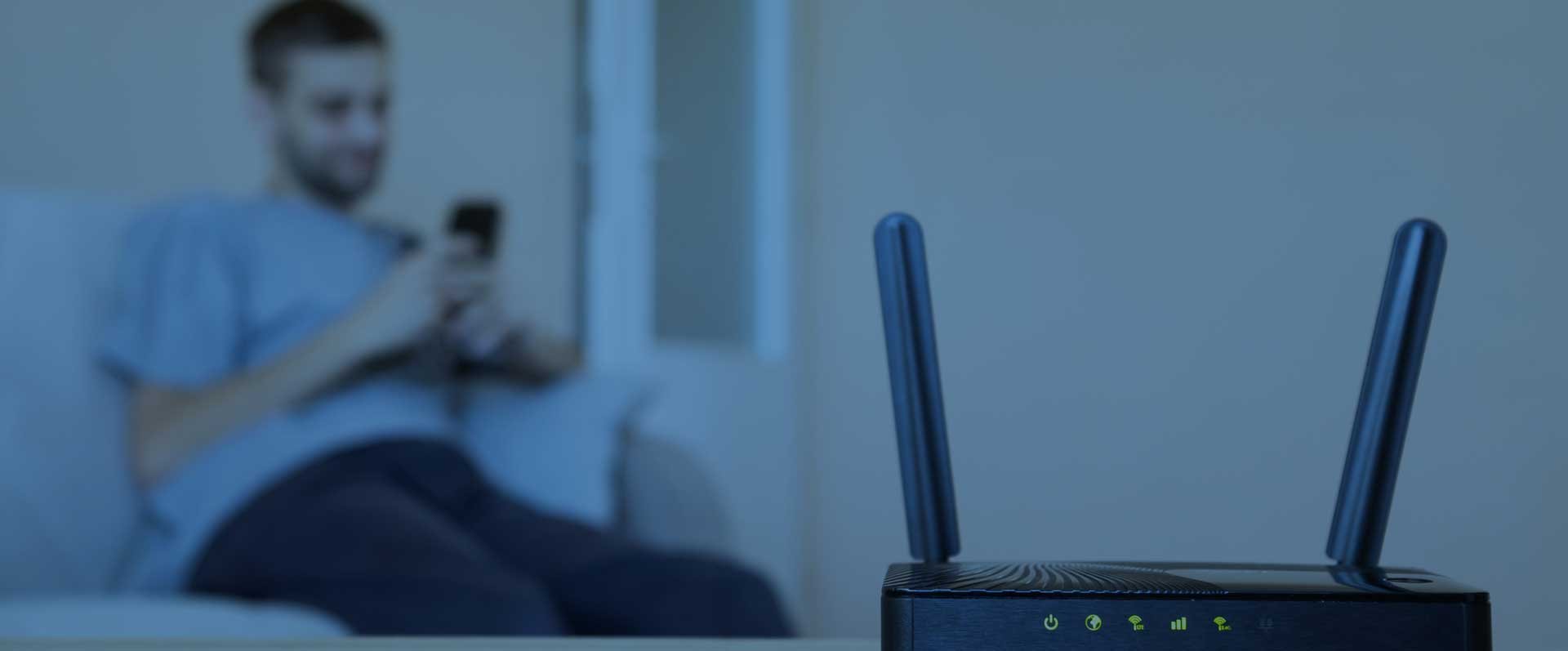A Property Manager's Guide to Smart Apartment Buildings


Smart apartment buildings, equipped with cutting-edge technology and automation systems, are becoming the new standard in property management. In this comprehensive guide, we will explore the concept of smart apartment buildings, the benefits they offer to owners and tenants, how to build or upgrade to one, the key features and technologies involved, and the steps to plan and implement a smart apartment building strategy.
What is a Smart Apartment Building?
Before diving into the benefits and details of smart apartment buildings, let’s first define what they are. Smart apartment buildings, also known as connected or intelligent buildings, leverage advanced technology and automation systems to enhance the living experience for residents, make life easier for property managers, and deliver value to building owners. The buildings and individual apartments are equipped with a range of interconnected devices and sensors that collect data, enable centralized control and monitoring, and meet resident requirements for connectedness. The goal is to create a more efficient, secure, comfortable, and convenient living environment.
Managed WiFi is the critical component of a smart apartment building, as it provides the backbone for the connected devices and technologies that make the buildings "smart." More to come on that. First, let’s discuss the benefits of smart apartments and smart buildings.
The Benefits of Smart Apartments for Property Owners and Managers
Smart apartment buildings represent a win-win situation, where technological innovation enhances the quality of life for residents while improving operational efficiency for property managers.
 Improved Efficiency and Cost Savings
Improved Efficiency and Cost Savings
One of the most significant advantages of smart apartment buildings is improved efficiency, which can lead to substantial cost savings. Here are some key savings opportunities:
- Energy Management and Savings: Smart apartment buildings employ energy-efficient technologies like automated lighting and climate control systems. These systems adapt to residents' preferences, building usage patterns, and environmental conditions, reducing energy waste and ultimately lowering utility bills.
- Water Conservation and Monitoring: Smart water monitoring systems can detect leaks and inefficient water usage, helping to lower water bills and conserve the resource.
- Waste Management Optimization: Automated waste management systems can optimize trash collection schedules, potentially lowering operational costs and the environmental impact.
 Enhanced Security and Safety
Enhanced Security and Safety
The safety and security of your property and residents are paramount concerns for property managers. Smart apartment buildings offer several features to help put your mind at ease:
- Smart Access Control Systems: Modern access control systems allow property managers to grant and revoke access remotely, enhancing security and convenience. Residents can use keyless entry systems, access cards, or even smartphone apps to enter their apartments, laundry facilities, and other on-site services.
- Surveillance and Monitoring: Integrated surveillance systems provide real-time monitoring of common areas and entrances, deterring potential security threats and providing valuable evidence should an incident occur.
- Fire and Gas Detection: Smart fire and gas detection systems can quickly detect potential hazards and alert property managers and residents. Early notice enables swifter responses, helping to reduce the danger or damage and keep your residents and staff safe.
- Lower Insurance Costs: Heightened building security and early detection systems often result in lower insurance premiums.
 Increased Property Value and Marketability
Increased Property Value and Marketability
Smart apartment buildings can have a significant impact on property value and marketability:
- Attracting Tech-Savvy Residents: Residents are increasingly tech-savvy and value the convenience and security provided by smart apartments. Properties equipped with “smart” technologies are more appealing to potential residents.
- Competitive Advantage in the Market: Smart apartments differentiate your property from the competition, making it stand out in a crowded real estate market. This competitive edge can lead to higher occupancy rates and fewer or shorter vacancy periods.
- Higher Rental Rates and Occupancy Rates: The added value of smart technology allows property owners to command higher rental rates, boosting net operating income. Additionally, the enhanced living experience—lower costs, improved security, environmental responsibility—can lead to longer tenant retention.
- Increased Property Value: A properly designed, installed, and maintained managed WiFi system is an asset to the building owner and often increases the value of the property at resale.
Key Features and Technologies of Smart Apartments
Let's explore some of the core features and technologies that make smart apartments truly intelligent and convenient for residents and property managers alike:
 Smart Home Automation Systems
Smart Home Automation Systems
- Connected Appliances and Devices: Smart apartments are equipped with appliances and devices that can be controlled remotely through a central system or mobile app. Examples include smart thermostats, locks, lighting, and even appliances.
- Voice-Activated Assistants: Voice-activated assistants like Amazon's Alexa or Google Assistant enable residents to control various aspects of their homes through voice commands, adding a new level of convenience.
- Automated Lighting and Climate Control: Automated lighting and climate control systems adjust settings based on occupancy and user preferences, optimizing energy usage and comfort.
 IoT Integration and Connectivity
IoT Integration and Connectivity
The Internet of Things (IoT) plays a pivotal role in smart apartment buildings:
- Interconnected Devices and Infrastructure: IoT devices, sensors, and systems are interconnected, sharing data to enable centralized control and monitoring.
- Centralized Control and Monitoring Platforms: Property managers can use centralized platforms to monitor and control various systems, helping to ensure more efficient operations and timely responses to issues.
- Data Analytics and Insights: Data collected from IoT devices can provide valuable insights into resident behavior, energy usage patterns, and system performance, helping property managers make informed decisions and negotiate more cost-effective vendor agreements.
 Resident-Focused Amenities
Resident-Focused Amenities
Smart apartments also enhance the resident experience with resident-focused amenities:
- Mobile Apps and Remote Management: Residents can use mobile apps to control their apartment's smart features, request maintenance, and access community information.
- Community Engagement and Social Connectivity: Community engagement platforms foster a sense of belonging among residents and enable them to connect with neighbors, share information, and participate in events.
- Personalized Services and Convenience: Smart apartments can offer concierge services, such as package delivery notifications and dry-cleaning pickup, delivering convenience and overall resident satisfaction.
Planning and Implementing a Smart Apartment Building
Now that we've explored the benefits and key features of smart apartment buildings, let's shift our focus to the crucial steps involved in planning and implementing one successfully.
We’ll start by outlining the steps involved in setting up a smart apartment building. The process includes conducting a property assessment, selecting the right technology partners and vendors, designing the smart infrastructure, and implementing the smart systems.
 Conducting a Property Assessment
Conducting a Property Assessment
Conducting a thorough property assessment is always Step #1 in the process. The assessment includes the following steps:
- Identifying Existing Infrastructure: Assess your current building infrastructure to determine compatibility with smart technology integration.
- Evaluating Budget and Resource Requirements: Determine the budget required for implementing smart systems and ensure adequate resources are available. Generating a reliable ROI estimate will also help you justify the investment and plan the implementation schedule.
- Conducting Market Research and Demand Analyses: Research the local market to understand the demand for smart apartments and the preferences of potential tenants.
 Selecting the Right Technology Partners and Vendors
Selecting the Right Technology Partners and Vendors
Choosing the right technology partners and vendors and knowing what questions to ask are crucial for the success of your smart apartment project. The selection process involves:
- Researching Reputable IoT and Automation Providers: Thoroughly research potential technology partners to ensure they have a track record of successful installations and reliable support.
- Requesting Proposals and Quotes: Request proposals and quotes from selected vendors to compare costs, timelines, and proposed solutions.
- Checking References and Previous Installations: Contact references provided by vendors to gauge their satisfaction with the technology and services provided.
 Designing the Smart Infrastructure
Designing the Smart Infrastructure
Creating a blueprint for the smart infrastructure is a critical step:
- Build a Blueprint for Connectivity and Integration: Work with technology partners to design a comprehensive plan for integrating smart systems into your building's infrastructure.
- Prioritize Key Features and Amenities: Determine which smart features and amenities are essential for your target resident demographic.
- Ensure Scalability and Futureproofing: Plan for future upgrades and expansions to ensure the services continue to work properly and securely as technology evolves.
 Implementing the Smart Systems
Implementing the Smart Systems
Once the design is complete, it's time to implement the smart systems:
- Coordinating with Contractors and Technicians: Coordinate with your managed WiFi vendor and other contractors to install the necessary infrastructure and devices.
- Conducting Thorough Testing and Quality Assurance: Test all systems extensively to ensure they function correctly and are reliable.
- Training Staff and Residents on Smart Technology Usage: Provide training to property staff and residents to ensure they can effectively use and troubleshoot smart systems. Again, a well-designed and supported managed WiFi network is the critical component, as it provides for a centralized management interface that is easy for staff to use.
Monitoring and Maintenance of Smart Apartment Systems
Implementing smart systems is only the beginning; ongoing monitoring and maintenance are crucial. Make sure you select a vendor that provides network support and holds to a maintenance schedule that ensures all systems remain in optimal condition.
- Regular Updates and Software Patches: Stay current with software updates and security patches to protect against vulnerabilities.
- System Health Monitoring and Diagnostics: Implement systems that monitor the health of smart technology and provide early warnings of potential issues.
- Promptly Addressing Residents' Technical Issues: Provide responsive technical support to address residents' questions and issues promptly.
- Happier and More Productive Staff: Property management staff are often pulled away from their regular, high-value duties to help residents resolve internet issues. With a reliable, properly designed, and vendor-supported managed WiFi network in place, your staff remain focused on their property management responsibilities.
Avoid any vendors that don’t offer long-term support for the systems and equipment they install. DojoNetworks is recognized industrywide for our Fanatical Resident Support. You shouldn’t settle for anything less.
 Gathering Resident Feedback and Improving the Experience
Gathering Resident Feedback and Improving the Experience
Maintain an open dialogue with your residents and commit to continuously improving their experience:
- Conduct Surveys and Feedback Sessions: Gather feedback from residents through surveys and feedback sessions to understand what they like or don’t like and identify areas for improvement.
- Iterative Enhancements Based on Input: Use resident input to make iterative enhancements to smart systems and services.
- Positive Reviews and Testimonials: Encourage residents to share their positive experiences through reviews and testimonials. According to PowerReviews research cited by Search Engine Journal in January 2023, more than 99.9% of consumers read online reviews, with 96% specifically looking for negative reviews. Boosting your online reviews should enhance your property's reputation, increase demand and, potentially, allow you to charge higher rents.
Conclusion
Smart apartment buildings offer numerous benefits to property owners and managers, including improved efficiency, enhanced security, increased property value, and a competitive edge in the market.
Embracing technology in real estate is not just a trend. It's a necessity. The high-level tips outlined here will get you started, but we strongly recommend that you consult with a respected managed WiFi service provider like DojoNetworks before reaching out to equipment vendors or other contractors. Without a properly designed and supported communication infrastructure, your smart technology will not perform well, and those online reviews may not be what you want to see.
Contact us to learn how you can start smart.





